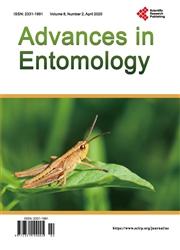Status of Highly Hazardous Pesticides and Their Mitigation Measures in Asia
引用次数: 7
Abstract
Pesticide is one of the major inputs in modern agriculture and its uses are increasing annually. Pesticides are seen as inherently benign, in the same way that medicines are. Many local languages even use the same word for “pesti-cide” and “medicine”. Along with the increasing consumption of pesticides, Highly Hazardous Pesticides (HHPs), which are more toxic are still in widespread use in Asia and constitute a substantial challenge to human health and the environment especially in low- and middle-income countries with less resources, training and capacities to deal with them. Reducing the risks posed by HHPs has become a priority in various international chemicals management policies, and many countries have started taking action accordingly. The objective of the paper is to establish the national status of the use of HHPs in Asia in line with FAO/WHO criteria for HHPs and encourage deliberate consideration of mitigation options for effective management of HHPs. This report is based on the nationally registered pesticide active ingredients and other related information obtained from Pesticide Registration Authori-ties of 13 Asian countries and research reports of different national and international journals. There are currently about 3557 pesticide products (active ingredients) registered in 13 Asian countries to control pests on crops and for public health uses, and 214 HHPs among the list of registered pesticides still in use in these Asian countries. An analysis of the list of registered formulated products revealed that from academia and research organizations to construct a baseline data which may be helpful to tone down the HHP situation in the country.亚洲高度危险农药的现状及其缓解措施
农药是现代农业的主要投入品之一,其使用量逐年增加。杀虫剂和药物一样,被视为天生无害的。许多当地语言甚至用同一个词来表示“杀疫剂”和“药物”。随着农药消费量的增加,毒性更大的高度危险农药在亚洲仍在广泛使用,对人类健康和环境构成重大挑战,特别是在资源、培训和能力较少的低收入和中等收入国家。减少HHPs带来的风险已成为各种国际化学品管理政策的优先事项,许多国家已开始采取相应行动。该文件的目的是根据粮农组织/世卫组织的HHPs标准确定亚洲使用HHPs的国家状况,并鼓励慎重考虑缓解HHPs的备选方案,以有效管理HHPs。本报告是根据从13个亚洲国家农药登记主管部门获得的农药有效成分国家注册及其他相关信息,以及不同国家和国际期刊的研究报告。目前在13个亚洲国家登记的农药产品(有效成分)约有3557种,用于控制作物害虫和公共卫生用途,在这些亚洲国家仍在使用的登记农药清单中,有214种HHPs。对已注册配方产品清单的分析表明,学术界和研究组织需要构建基线数据,这可能有助于缓和该国的HHP情况。
本文章由计算机程序翻译,如有差异,请以英文原文为准。
求助全文
约1分钟内获得全文
求助全文

 求助内容:
求助内容: 应助结果提醒方式:
应助结果提醒方式:


